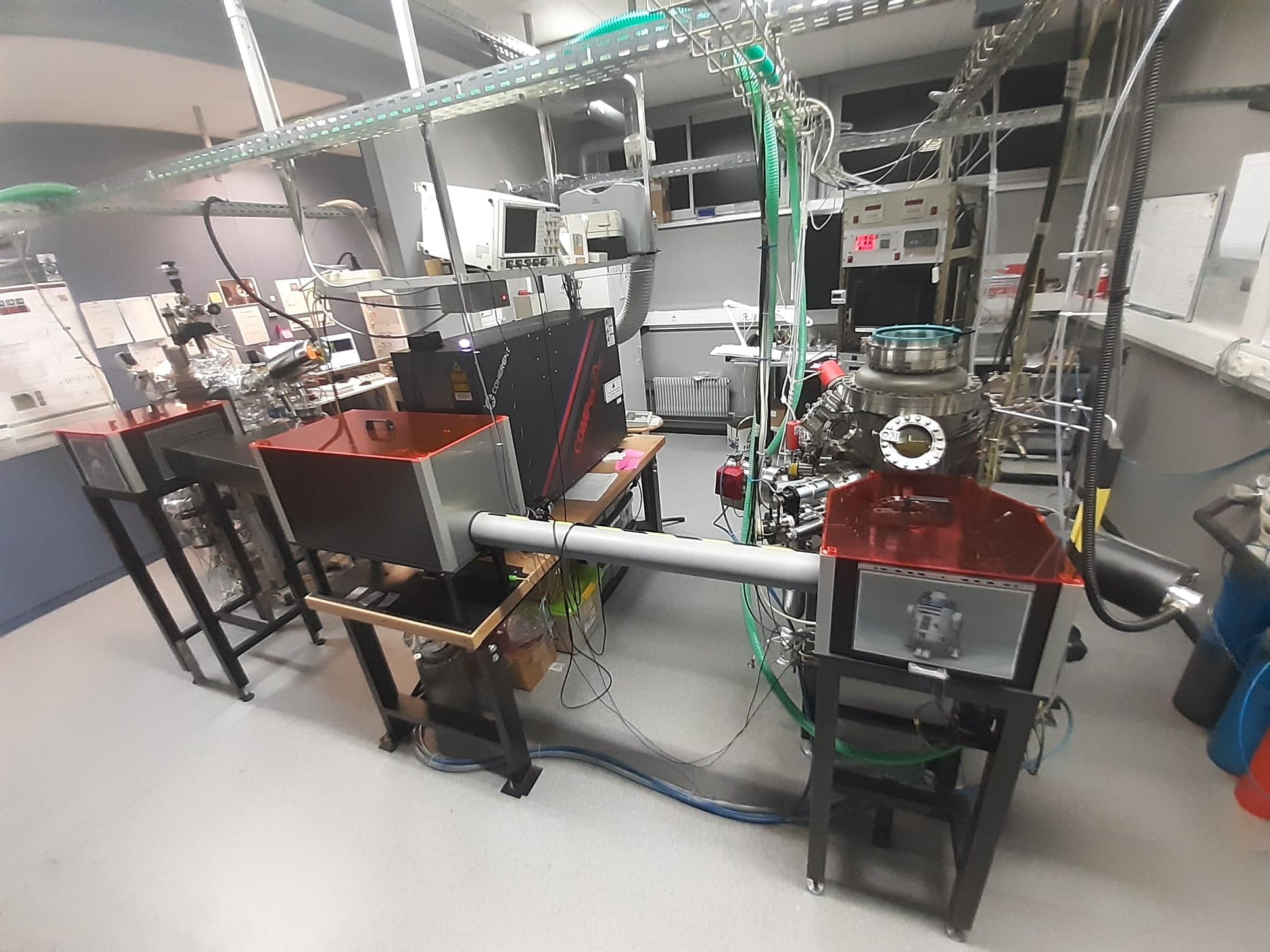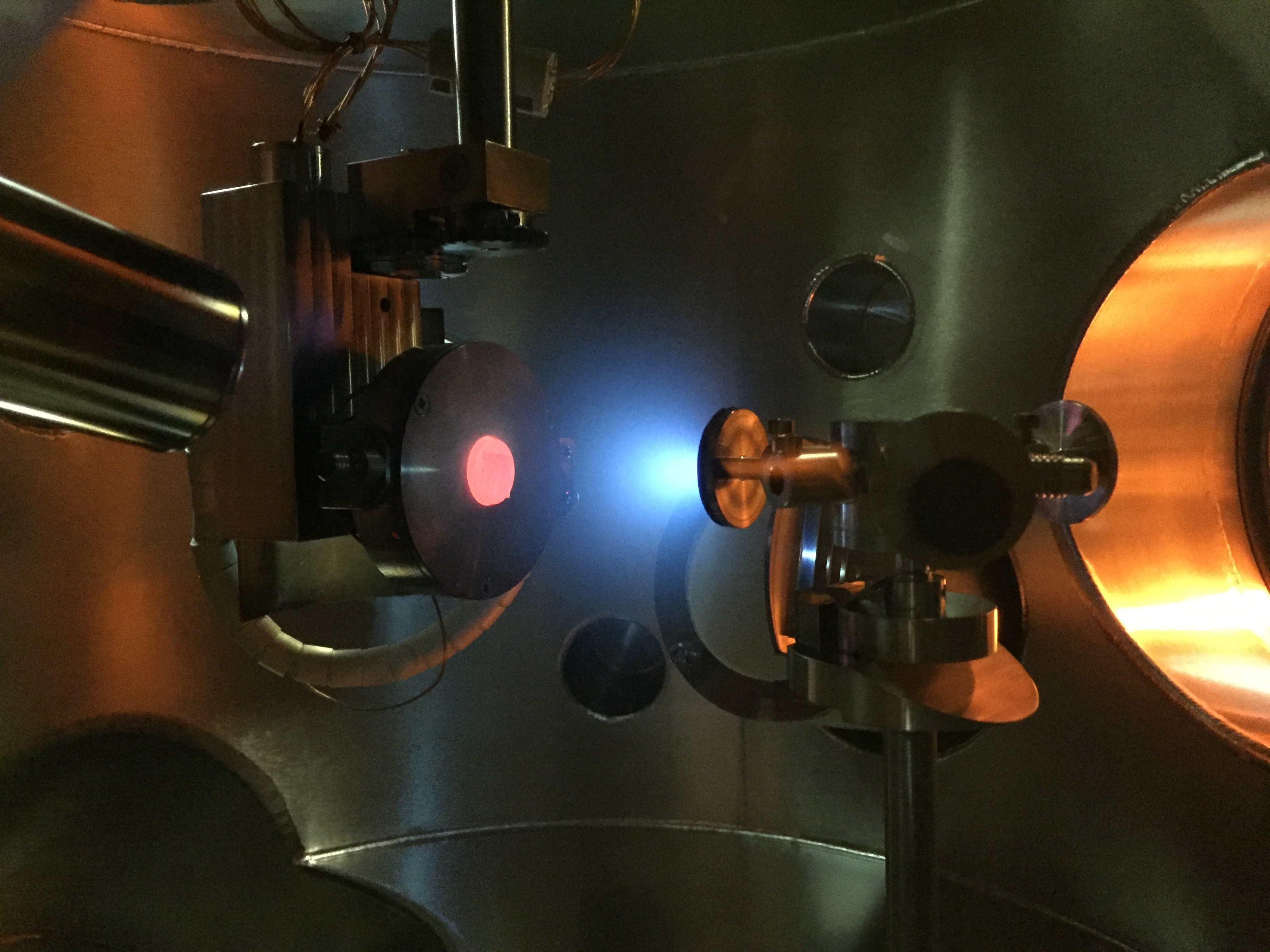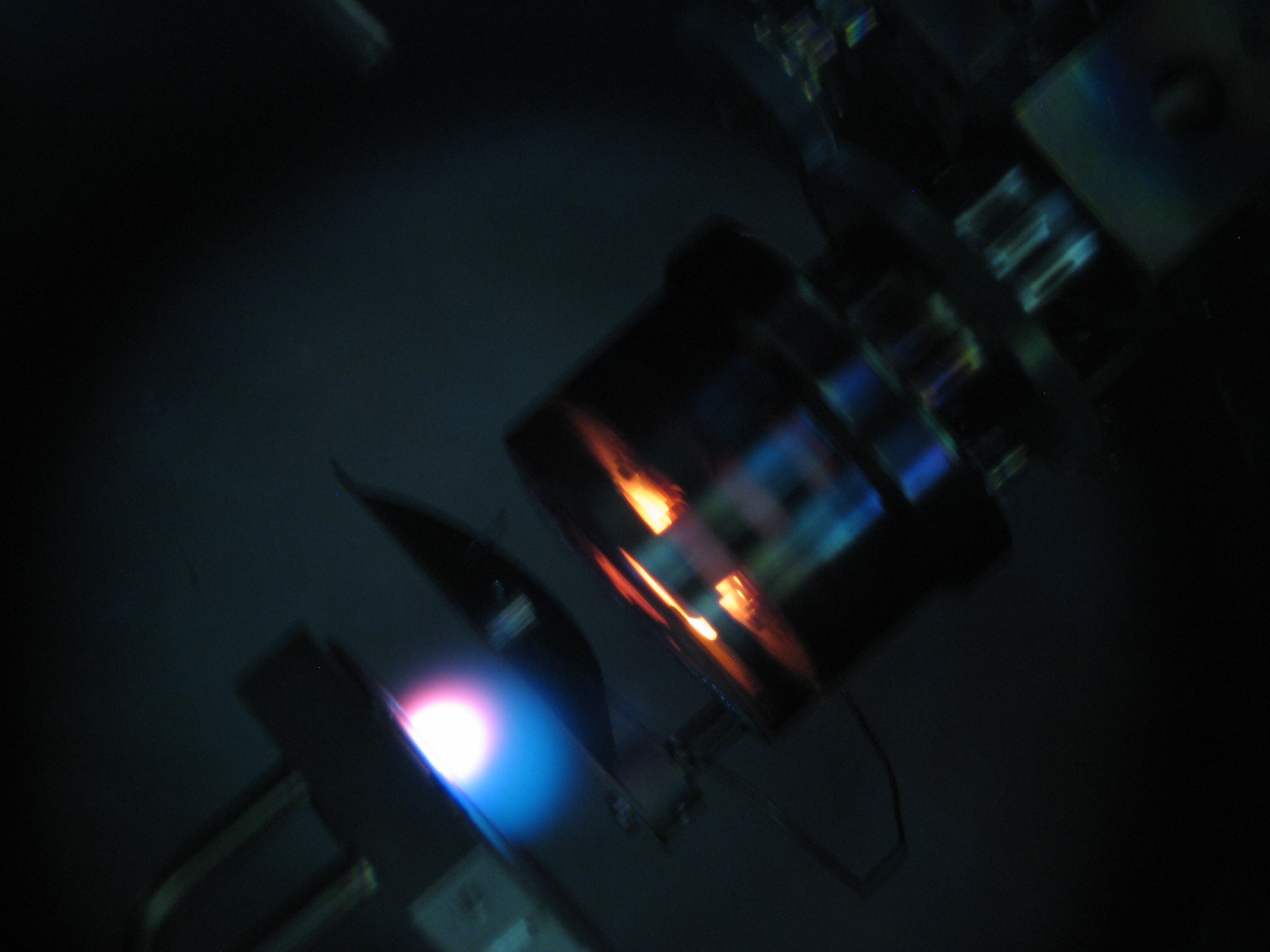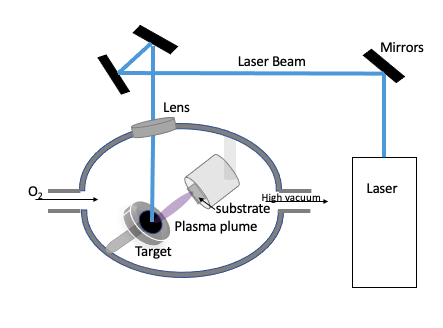
Pulsed Laser Deposition (PLD) is a physical method of thin film deposition. PLD involves focusing a high-energy UV laser on a target consisting of the material to be deposited. The energy transmitted to the target is sufficient to ablate and ionise the surface atoms. A plasma “plume” is formed perpendicular to the target. Opposite the target is the substrate on which the ejected material condenses. The target and substrate are placed in a controlled atmosphere chamber. The IPCMS has two laser ablation chambers: one homemade (nicknamed “R2D2”) and one manufactured by TSST (“BB8”).
Excimer Laser (Compex Pro COHERENT)
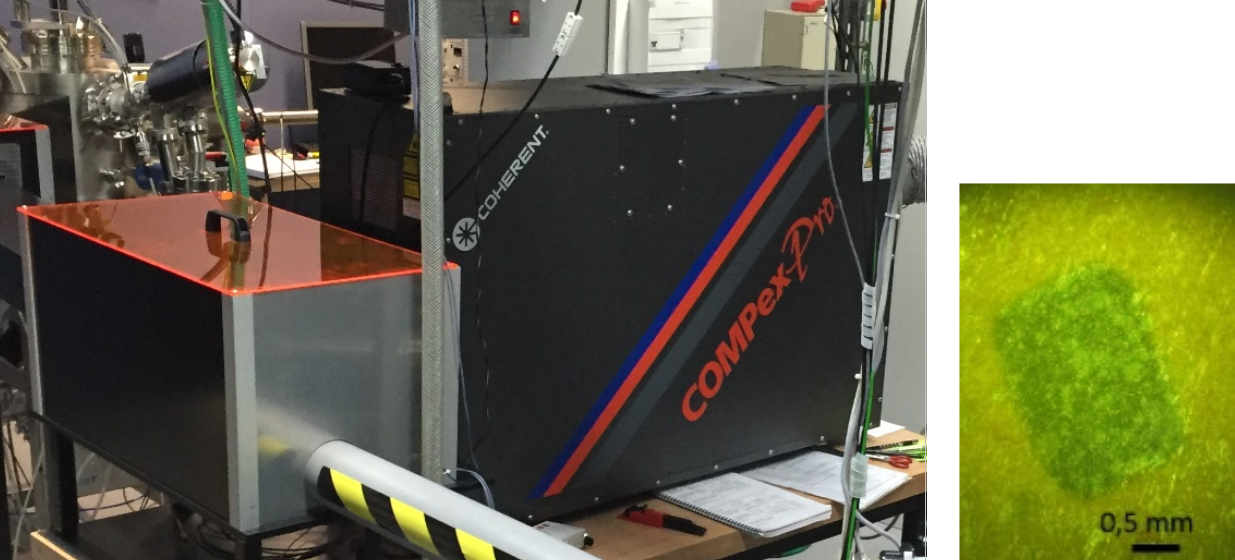
Krypton / Fluorine laser of wavelength λ=248nm. Maximum energy of 400 mJ, with a fluence of up to 5 J/cm². Very well defined laser impact with a rectangular shape and an area of 0.016 ± 0.003 cm². An optical box at the laser exit allows the laser beam to be directed to either of the two ablation chambers that equip the laboratory: R2D2 or BB8
“R2D2” depository chamber :
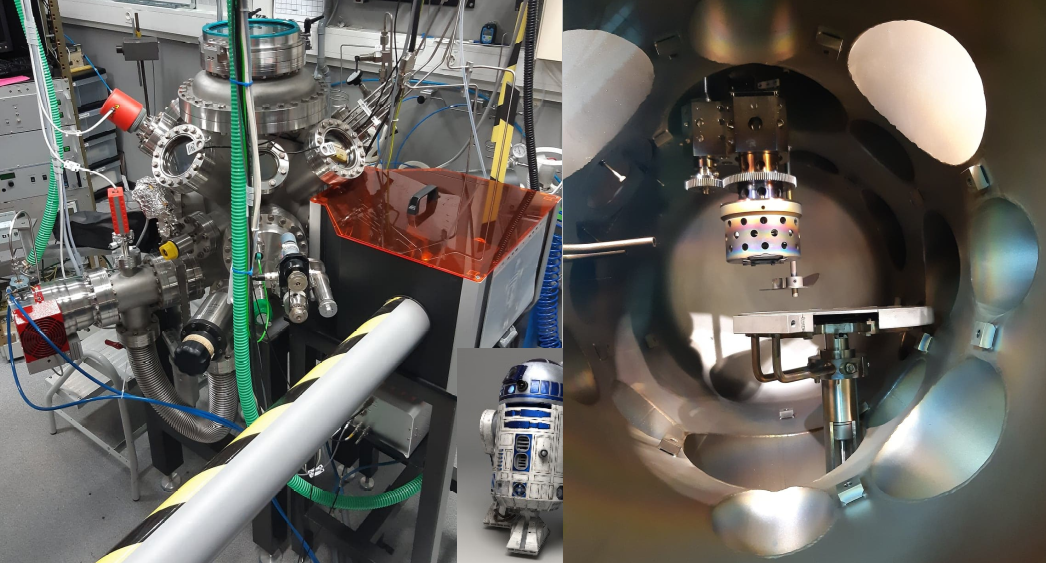
Carousel for up to 6 targets simultaneously in the ablation chamber. Base vacuum of 1 x 10-8 mbar. Atmosphere during deposition: partial pressure of oxygen or dry air. Radiation heating of the substrate up to 800°C with the possibility of rotation. Laser displacements by optical mirrors allowing co-ablation deposition.
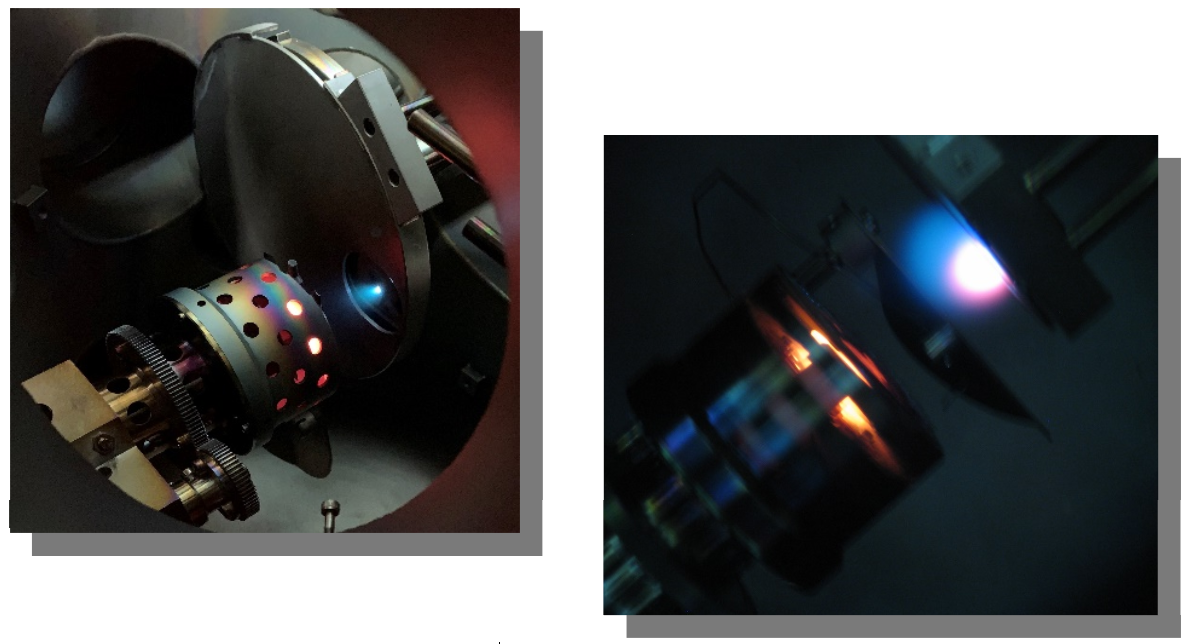
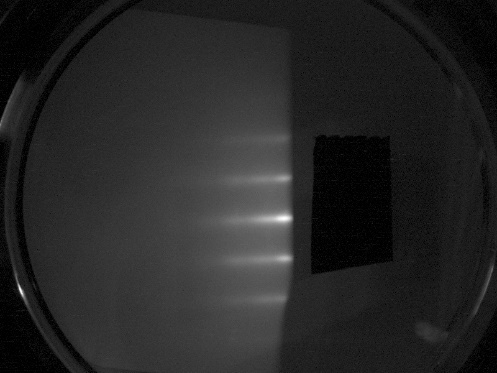
RHEED diffraction pattern of a La2/3Sr1/3MnO3 film deposited on a SrTiO3 (STO) substrate
“BB8” depository chamber :
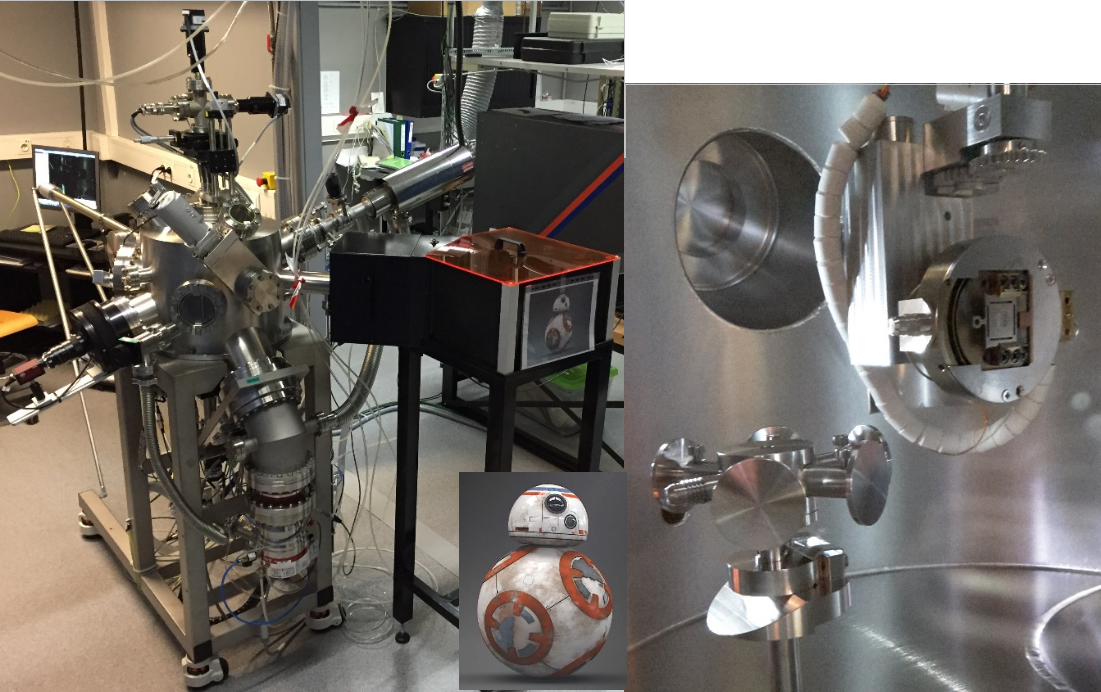
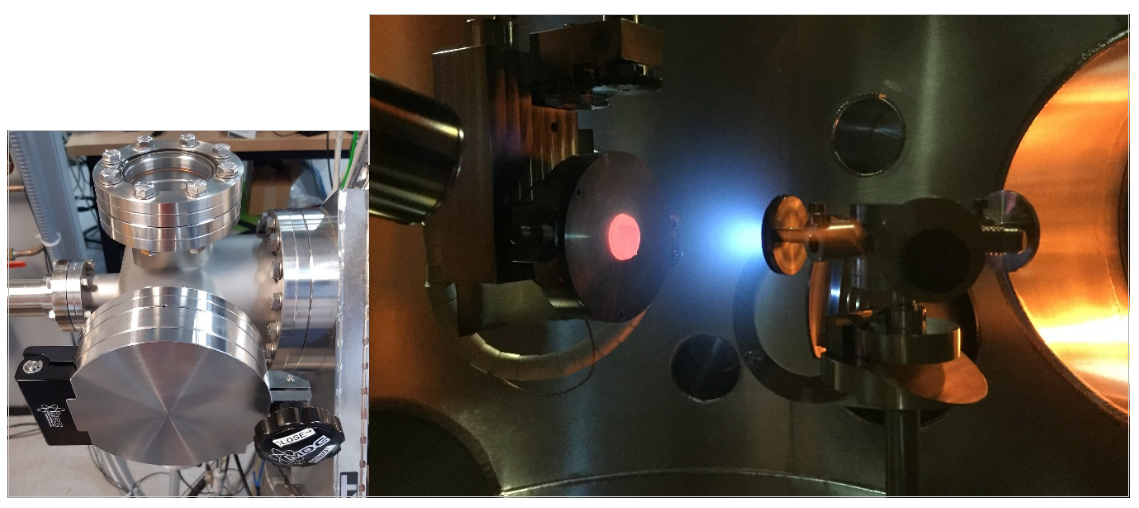
Motorised carousel allowing up to 5 targets simultaneously in the ablation chamber Base vacuum of 8 x 10-9 mbar. Atmosphere during deposition: Ar or O2 partial pressure. Resistive heating of the substrate up to 900°C. Substrate and target introduction airlock. High pressure RHEED for diffraction imaging and RHEED oscillation tracking up to 0.3 mbar partial pressure.
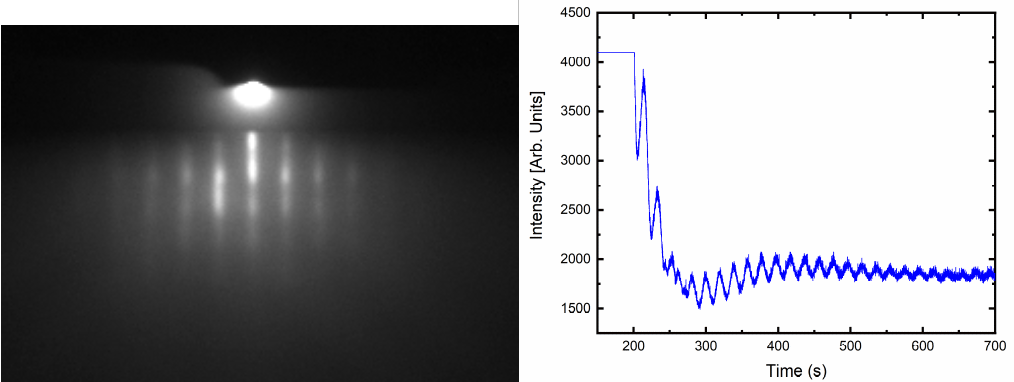
Diffraction pattern and RHEED oscillations of an NdNiO3 thin film deposited on a SrTiO3 (STO) substrate.
Video
example of a deposition on R2D2 using two targets
Photo gallery

